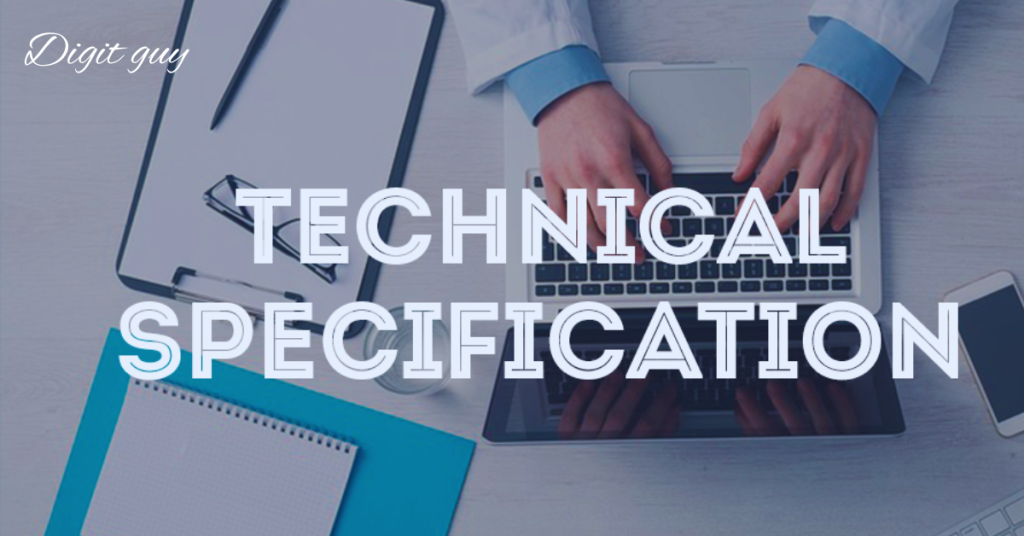The ongoing debate between Android and iOS users often sparks passionate discussions about the merits and drawbacks of each mobile operating system. Both platforms have evolved significantly since their inception, shaping the landscape of mobile technology and influencing user preferences worldwide.
Understanding the differences between Android and iOS is crucial for users, developers, and tech enthusiasts who seek to make informed decisions about their devices and software development strategies.
Historical Context and Development
Origins and Evolution
Android, developed by Google, and iOS, developed by Apple, have distinct origins and evolutionary paths. Android was launched in 2008 as an open-source platform, enabling a wide range of manufacturers to create devices running the operating system.
This flexibility has led to a diverse ecosystem of Android devices. iOS, on the other hand, was introduced by Apple in 2007 with the first iPhone, offering a tightly integrated hardware-software experience.
Market Adoption and Growth
Both Android and iOS have seen tremendous growth over the years. Android’s open-source nature has contributed to its widespread adoption, particularly in developing markets where affordability is crucial. iOS has maintained a strong presence in developed markets, attracting users with its premium devices and seamless ecosystem integration. As of 2024, Android holds a larger global market share, while iOS dominates in regions like North America and parts of Europe.
Technical Specifications

Hardware Integration
One of the fundamental differences between Android and iOS lies in their approach to hardware integration. Android operates on a variety of devices from different manufacturers, each with its unique specifications. This diversity allows for a broad range of choices in terms of price, design, and features. iOS, being exclusive to Apple devices, benefits from optimized hardware-software integration, ensuring consistent performance and quality across all iPhones and iPads.
Software Architecture
The software architecture of Android and iOS also differs significantly. Android uses a modified version of the Linux kernel, allowing for extensive customization and flexibility. This open-source nature facilitates innovation but also introduces variability in user experience across different devices.
User Interface and Experience
Design Philosophy
The design philosophies of Android and iOS are distinct. Android embraces Material Design, characterized by flat design elements, vibrant colors, and responsive animations, offering a dynamic and customizable interface. Users can personalize their home screens with widgets and themes, tailoring their experience to their preferences.
Navigation and Accessibility
Navigation and accessibility features further highlight the differences between Android and iOS. Android provides various navigation options, including gesture navigation, on-screen buttons, and customizable shortcuts. Its accessibility features are robust, catering to a wide range of users with disabilities. iOS excels in accessibility, offering a comprehensive suite of features such as VoiceOver, AssistiveTouch, and customizable display settings, ensuring an inclusive experience for all users.
Applications and Ecosystem

App Store vs. Google Play
The app distribution models of Android and iOS are distinct. The Google Play Store, serving Android users, offers a vast array of applications, many of which are free or ad-supported. Its open nature allows developers to publish apps with fewer restrictions, fostering innovation but occasionally resulting in quality control issues.
Integration with Other Services
Both platforms integrate seamlessly with their respective ecosystems. Android leverages Google’s services, including Google Drive, Gmail, and Google Photos, providing a cohesive experience for users invested in the Google ecosystem. iOS excels in integrating with Apple’s services, such as iCloud, Apple Music, and Apple Pay, creating a seamless environment for users with multiple Apple devices.
Security and Privacy
Security Features
Security is a critical aspect where Android and iOS diverge. Android’s open-source nature and widespread adoption make it a frequent target for malware and security threats. Google has implemented robust security measures, such as Google Play Protect and regular security updates, to mitigate risks. However, the variability in device manufacturers can result in inconsistent security practices. iOS, with its closed ecosystem, benefits from a more controlled environment.
Privacy Practices
Privacy practices also differ between the two platforms. Android, while offering extensive privacy controls, often requires users to manage permissions manually. iOS, under Apple’s privacy-centric approach, provides users with more transparency and control over their data. Features like App Tracking Transparency and Privacy Nutrition Labels highlight Apple’s commitment to user privacy, giving users more insight into how their data is used.
Performance and Efficiency

System Performance
Performance and efficiency are crucial factors influencing user satisfaction. Android’s performance can vary widely depending on the device’s hardware specifications. High-end Android devices often match or exceed the performance of iPhones, but lower-end devices may struggle with resource-intensive tasks.
Battery Life and Optimization
Battery life and optimization are essential considerations for mobile users. Android devices offer various battery optimization features and settings, allowing users to manage power consumption effectively. However, the variability in hardware and software can lead to inconsistent battery performance. iOS devices, benefiting from tight hardware-software integration, typically offer excellent battery life and efficient power management.
Customization and Flexibility
User Customization
Customization is a key differentiator between Android and iOS. Android’s open nature allows users to extensively customize their devices, from home screen layouts to system-level tweaks. Users can install custom ROMs, change default apps, and use third-party launchers to create a personalized experience. iOS, while more restrictive, has gradually introduced customization options such as widgets, customizable app icons, and improved control over settings.
Developer Flexibility
Developer flexibility is another area where Android and iOS differ. Android’s open-source platform provides developers with greater freedom to experiment and innovate. The ability to sideload apps and access deeper system functionalities allows for a wider range of applications and customizations. iOS, with its closed ecosystem, imposes stricter guidelines and limitations on developers.
Updates and Support

Software Updates
The approach to software updates is a significant difference between Android and iOS. Android updates are often delayed due to the fragmentation of devices and manufacturers. While Google releases timely updates for its Pixel devices, other manufacturers may take months to roll out the latest Android version. iOS, controlled by Apple, ensures that all compatible devices receive updates simultaneously, providing a more consistent and secure user experience.
Long-term Support
Long-term support is another critical aspect where iOS has an advantage. Apple provides software updates for older devices for a more extended period, ensuring users can enjoy the latest features and security improvements. Android devices, particularly those from non-Google manufacturers, may receive limited long-term support, prompting users to upgrade their devices more frequently.
Applications and Software Ecosystem
App Quality and Availability
The quality and availability of applications on Android and iOS differ significantly. The Google Play Store offers a larger number of apps, catering to a diverse audience with varying needs. However, the open nature of the Play Store can result in inconsistencies in app quality and security. The Apple App Store, with its rigorous review process, ensures that apps meet high standards of quality and security, albeit with a smaller selection.
Exclusive Apps and Features
Exclusive apps and features also play a role in differentiating the two platforms. iOS users enjoy exclusive apps and features such as FaceTime, iMessage, and a seamless integration with other Apple services like Apple Music and iCloud. Android users benefit from Google’s suite of services, including Google Assistant, Google Photos, and a more versatile integration with third-party apps and services. The choice between the two platforms often comes down to personal preference and the specific ecosystem a user is invested in.
Gaming and Multimedia

Gaming Experience
The gaming experience on Android and iOS varies due to differences in hardware and software optimization. High-end Android devices offer powerful hardware capable of delivering a top-tier gaming experience. However, the variability in device performance can affect game compatibility and optimization. iOS devices, particularly the latest iPhones and iPads, are known for their superior performance and optimization, providing a consistent and high-quality gaming experience.
Multimedia Capabilities
Multimedia capabilities, including photo and video editing, media consumption, and streaming, are critical aspects of modern mobile devices. Android devices offer a range of multimedia features, with many high-end models providing advanced camera systems and powerful editing tools. Google’s integration with YouTube and Google Photos enhances the multimedia experience. iOS devices, known for their excellent camera quality and advanced editing capabilities, benefit from seamless integration with Apple’s multimedia ecosystem, including services like Apple Music, Apple TV+, and iCloud.
Voice Assistants and AI Integration
Google Assistant vs. Siri
Voice assistants and AI integration are essential components of modern smartphones. Google Assistant, available on Android devices, is known for its superior AI capabilities, extensive knowledge base, and seamless integration with Google’s services. It excels in natural language processing and provides more accurate and contextual responses. Siri, Apple’s voice assistant, offers tight integration with iOS and Apple’s ecosystem.
AI Features and Automation
AI features and automation further distinguish Android and iOS. Android devices benefit from Google’s AI advancements, including features like predictive text, smart replies, and automated routines. The integration of AI in Google Photos, Google Maps, and other services enhances the overall user experience. iOS leverages AI for features like Face ID, Siri Shortcuts, and personalized recommendations in apps like Apple Music and Photos.
Conclusion
In summary, the differences between Android and iOS are multifaceted, encompassing aspects such as hardware integration, software architecture, user experience, security, customization, updates, applications, gaming, multimedia, and AI integration. Each platform has its strengths and weaknesses, catering to different user preferences and needs. iOS, with its polished user experience, seamless ecosystem integration, and strong security measures, appeals to users seeking reliability and premium quality. Ultimately, the choice between Android and iOS depends on individual priorities, preferences, and the specific ecosystem one is invested in.
